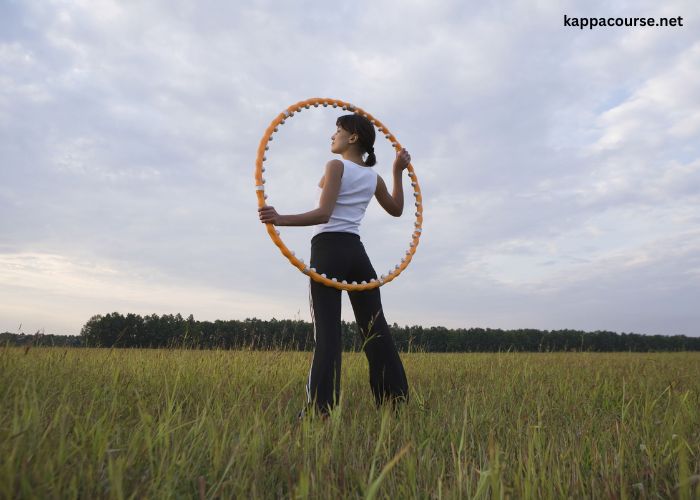Learning to hula hoop is not difficult – and it’s worth it! This article summarizes why hula hooping is good, how it works, and what you should keep in mind.
You probably remember hula hooping from your childhood. What was mainly a fun pastime back then can now be used as an effective workout at home, and you can bet it is also a lot of fun.
But how does the hula hoop work? The aim is to let the hoop circle around your body for as long as possible. The name is derived from a traditional Hawaiian dance (“hula”) and the English word for “hoop” (“hoop”).
The practical thing is that you don’t need much to learn to hula hoop: A little space and a suitable hoop, and you’re ready to start training.
Learning to hula hoop is worthwhile.
Hula hooping is an all-round sport that works the whole body:
- trains various muscle groups: arm, leg, gluteal, and (above all) abdominal and back muscles
- increases endurance, stamina, and coordination
- promotes mobility
- tightens the tissue as the hoop massages it and improves blood circulation
- strengthens the pelvic floor
Hula hooping is popular because it brings variety to your sports routine, can boost your sports motivation, is a lot of fun, and can be done on the side. Experienced hoopers can use their time while hooping, for example, listening to music or podcasts or watching TV. You can easily integrate the sport into your everyday life. Learning to hula hoop is, therefore, worthwhile.
Another effect of hula hooping is the increased calorie consumption – depending on your basic constitution and the intensity of hula hooping, you can burn between 200 and 300 calories in 30 minutes. So, it is possible to lose weight with Hula Hoop. A proper diet and sufficient exercise are essential for healthy and effective weight loss. In addition, you should only try to lose weight if you think it is good for you – and not conform to current beauty ideals.
You can combine other exercises with the hula hoop to make the training more intense, such as arm exercises. Or you can dance while the hoop circles around your hips. This way, hula hooping never gets boring.
Note: If you have back problems or abdominal discomfort, seek medical advice on whether and to what extent you can hula hoop.
Instructions and tips for learning to hula hoop
When learning to hula hoop, standing and moving correctly is essential.
The starting position
Place your feet hip-width apart and parallel to your shoulders. Bend your knees slightly. Straighten your back and tilt your pelvis slightly forward so you don’t have a hollow back. Build up tension in the abdominal area.
Grasp the tire with both hands and align it parallel to the floor at waist level. Press it lightly against your lower back. The arms should form roughly a right angle.
Initially, it may be easier if you align your legs unevenly. This means that you place one foot about 20 to 30 centimeters further forward on the floor.
The right movement:
- The first swing is essential. You do this with your hands by giving the tire a good push to the left or right. Move your upper body in the opposite direction. Try out which side is easier for you.
- Your legs are stationary and firmly anchored to the floor. Only move your upper body together with your hips and keep tension in the abdominal area (necessary!). You should keep your arms stretched or bent so they don’t get in the way of the circling hoop.
- Movement can be made from right to left or from front to back. This means you push your body back and forth rather than moving it in a complete circle. Which direction you choose is up to you. You can also vary.
- In the beginning, many people find it easier to move back and forth.
- Now, perform this movement evenly and rhythmically, similar to the hula hoop movement. You can imagine it like this: always push your body against the hoop to the point where it touches your body.
If learning to hula hoop doesn’t go well initially, don’t despair and keep at it. Once you have internalized the movements and got the hang of it, you will find it easy to keep the hoop up. So, the first thing to do when hooping is to practice. Then, the actual training can begin.
More tips for learning to hula hoop
Learning to hula hoop is easy with these additional tips:
- Space: find a place in your home or outdoors where you have enough space to hula hoop and where there is no risk of knocking something over with the hoop.
- Clothing: Choose comfortable sportswear. However, it should not be too loose-fitting, as this will prevent the tire from rotating. If you like, you can train with your stomach bare, as the hula hoop holds better on bare skin than on clothing.
- Duration: Start with short training sessions to learn how to hula hoop and build up slowly. For example, you can start with five to ten minutes every other day and work up to 30 minutes daily.







